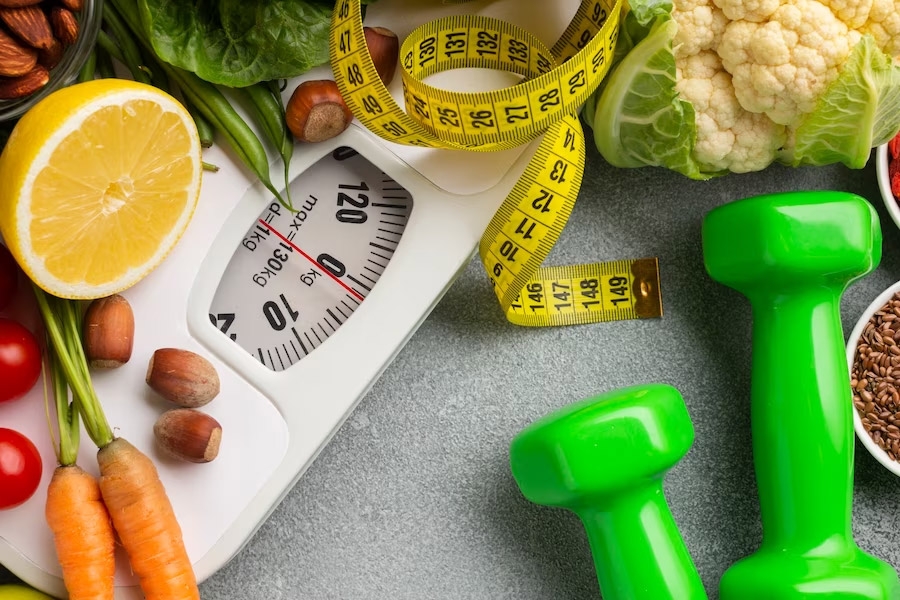
Did you know higher muscle mass leads to an increased Basal Metabolic Rate (BMR), which is the number of calories your body burns at rest? This is because maintaining muscle tissue demands more energy than maintaining fat tissue due to its higher metabolic activity. We spoke to Chitharesh Kongarampilly Natesan aka The Indian Monster, Indian Professional Bodybuilder, who explained how increasing muscle mass can turbocharge your metabolism and provided practical tips to maximise your metabolic potential.
Table of Content:-

Natesan said, “As a fitness trainer and bodybuilder, I have encountered numerous clients striving to enhance their metabolic rates to achieve their desired physique and performance goals. One crucial aspect often overlooked is the significant influence of muscle mass on metabolic rate.”
Muscle tissue exhibits metabolic activity, necessitating energy (calories) for its maintenance even during periods of rest. This energy expenditure, known as Basal Metabolic Rate (BMR), accounts for a significant portion of daily calorie expenditure. Therefore, individuals with higher muscle mass tend to have higher BMRs compared to those with lower muscle mass.
Impact of Muscle Mass on Metabolic Rate

Increased Resting Metabolic Rate (RMR)
“Building muscle through resistance training leads to a higher BMR, as muscle tissue demands more energy for maintenance and repair. This elevated metabolic rate persists even during periods of rest, contributing to greater calorie burn throughout the day”, said Natesan.
Enhanced Caloric Expenditure
Engaging in activities that require muscle movement, such as weightlifting and High-Intensity Interval Training (HIIT), further amplifies calorie expenditure. The more muscle mass you possess, the more efficiently your body utilises calories during physical activity, resulting in greater overall energy expenditure.
Also Read: Sweat Equity: Expert Explains How Smart Workouts Are Redefining Fitness Success
Afterburn Effect
Natesan highlighted Intense workouts stimulate Excess Post-Exercise Oxygen Consumption (EPOC), commonly referred to as the 'afterburn effect'. This post-workout metabolic boost occurs as your body works to restore oxygen levels, repair muscle tissue, and replenish energy stores. With increased muscle mass, the magnitude and duration of the afterburn effect are amplified, leading to extended calorie burn post-exercise.
Practical Tips to Increase Muscle Mass and Boost Metabolism
Natesan listed tips to increase muscle mass and boost metabolism as follows:

Prioritise Resistance Training
“You should add compound exercises like squats, deadlifts, bench presses, and rows into your workout routine. Aim for progressive overload by gradually increasing weight or intensity to stimulate muscle growth”, said Natesan.
Optimise Protein Intake
Start consuming an adequate amount of protein to support your muscle repair and growth. Aim for 1.6-2.2 grams of protein per kilogram of body weight daily, spread evenly across meals.
Fuel Your Body
“Eat nutrient-dense meals comprising lean protein, complex carbohydrates, healthy fats, and plenty of fruits and vegetables. Adequate nutrition provides the essential building blocks for muscle development and supports overall metabolic health”, added Natesan.
Also Read: Metabolism And Ageing: Expert Explains Changes In Metabolism As You Age

Prioritise Recovery
You should allow sufficient time for rest and recovery between workouts to prevent overtraining and promote muscle repair. Incorporate techniques, such as foam rolling, stretching, and adequate sleep optimise recovery and performance.
According to the Multidisciplinary Digital Publishing Institute (MDPI), it is important to maintain balance between training stress and physical recovery after an exercise to maximise their adaptability and performance in the following training sessions or contests.
Stay Hydrated
Hydration is vital for optimal metabolic function and muscle performance. Do not forget to drink plenty of water throughout the day, especially before, during, and after workouts.
Incorporate HIIT
High-intensity interval training not only torches calories during the workout but also stimulates muscle growth and enhances metabolic rate long after the session ends. Include HIIT workouts 2-3 times per week to maximise fat loss and muscle gain.
Bottomline
Natesan concluded, “Increasing muscle mass plays a pivotal role in elevating metabolic rate and promoting overall health and fitness. By adding resistance training, optimising nutrition, and prioritising recovery, you can enhance muscle growth, boost metabolism, and achieve your desired physique and performance goals. Remember, consistency and dedication are key on the journey to a revved-up metabolism and a stronger and leaner body.”
[Disclaimer: This article contains information provided by an expert and is for informational purposes only. Hence, we advise you to consult your expert before starting your exercise regimen, especially if you are dealing with any injury.]
Also watch this video
How we keep this article up to date:
We work with experts and keep a close eye on the latest in health and wellness. Whenever there is a new research or helpful information, we update our articles with accurate and useful advice.
Current Version